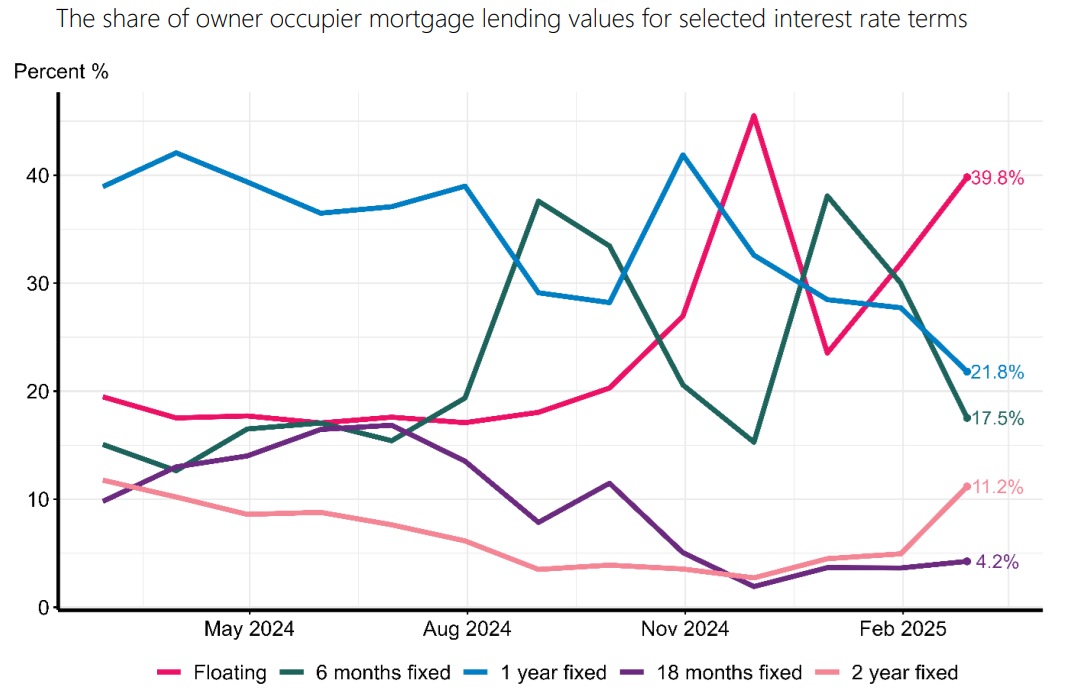
Nearly 40% of the new mortgage commitments loaded up in February were on floating rates as home-owners continued to favour going 'short'.
But the heavy promotion by banks of two-year 'special' fixed rates lower than for other terms was also starting to show a clear impact in the month.
According to the latest monthly Reserve Bank figures, some $1.607 billion of the $4.036 billion total of mortgages taken up by owner occupiers in February were on floating rates.
However, from being virtually deserted by homeowners, the two-year fixed mortgage rates saw a surge in the month.
Some $451 million worth of mortgages were taken up by owner-occupiers on two-year fixed. That represented 11.2% of the owner-occupiers' total, up from just 4.9%.
The RBNZ lowered the Official Cash Rate by 50 points to 3.75% on February 19.
It's a reasonable bet quite a few people who took up floating mortgage commitments would have been waiting for that decision. So, it will be interesting to see what trends evolve from March onward - but the surge of take-up of two-year mortgages in February probably provides some clues.

The RBNZ's C71 data series has data going back to 2021. It differs from other monthly series published by the RBNZ in that it shows mortgage figures for after the mortgage has been uplifted (while other series highlight mortgage figures for when the mortgage has been committed to). (The RBNZ summary of the latest data is here.)
The C71 data therefore shows the flow of the money and into what rates as and when it happens.
The picture painted since the beginning of 2024 has been of homeowners going shorter and shorter with their mortgage terms as anticipation grew of the RBNZ beginning to cut the OCR.
The cuts started in August 2024, dropping the OCR from its cycle high of 5.5%. A further cut is expected when RBNZ has its next review on Wednesday (April 9). Beyond that it is less clear. The now-departed then RBNZ Governor Adrian Orr effectively pledged 25 basis point cuts at each of the April and May OCR reviews.
However, he's since gone and subsequently there's been the Trump tariff shock - with ramifications that are still far from clear.
But more clear has been the fact that NZ's homeowners have a clear idea that they want to wait for the lowest rates they can get.
Meanwhile in February the recently very popular six month terms dropped in take-up from 30% to 17.5%.
In terms of the investors, the RBNZ reports that floating terms accounted for 43.0% of new lending, up from 35.1% in January.
New residential investor lending on six-month fixed terms decreased by 18.2 percentage points (to a 16.4% share). The share of two-year fixed terms increased from 3.6% in January to 11.6%.

We welcome your comments below. If you are not already registered, please register to comment.
Remember we welcome robust, respectful and insightful debate. We don't welcome abusive or defamatory comments and will de-register those repeatedly making such comments. Our current comment policy is here.